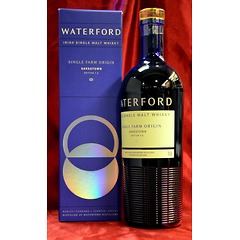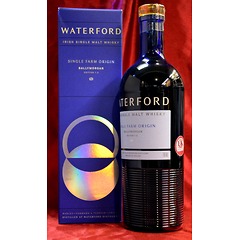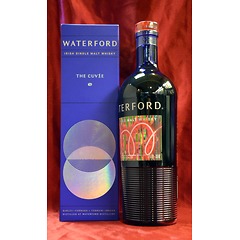Waterford
Just like when Beam Inc came knocking of the door of the Cooley distillery, Remy Cointreau came knocking on the door of the Bruichladdich distillery in 2012, with a huge fistful of cash, the board of the distillery said “Thank you very much and close the door on your way out” or words to that effect I presume. Just like at Cooley there were rumours of shareholders falling out over the direction that the distillery was taking, and although the then CEO Mark Reynier didn’t actually want to sell the distillery, he had no choice at the end of the day.
Fast forward two years and Mark had gathered together a group of likeminded investors and had purchased a former Guiness brewery from Diageo for a reputed 7.2 million euros. What made the deal completely head scratching was that Diageo had only purchased the site 10 years previously and had invested a whopping 40 million euros in the plant, so with lots of pretty much shiny new kit in place it didn’t take long or a huge amount of money to convert it into a working distillery.
Given that Mark was considered the ‘shouty’ one at Bruichladdich nobody should have expected him to go quietly into the night. He has gone on record as saying that he was frustrated at the sale of Bruichladdich because he hadn’t finished what he wanted to do and that was prove that the wine concept of terroir was relevant to the whisky industry. Bruichladdich had already commenced distilling barley grown on separate farms throughout Scotland, which they had called the regional trials, to see if there was any difference between the spirit produced from these farms, so Mark continued this experiment with various farms in Ireland and this led to the range called Single Farm Origins.
However, Waterford is not a one trick pony, they have also embraced another French idea, that of the Cuvee. By taking these individual building blocks and blending them together in order to make the whole greater than the sum of its parts. Finally, there is their Arcadian Barley releases, in which they explore the old ways from Organic and Biodynamic farming processes through to heritage varieties of barley.
So, with typical understatement, they claim to be “On a quest to unearth whisky’s most natural flavours.
Fast forward two years and Mark had gathered together a group of likeminded investors and had purchased a former Guiness brewery from Diageo for a reputed 7.2 million euros. What made the deal completely head scratching was that Diageo had only purchased the site 10 years previously and had invested a whopping 40 million euros in the plant, so with lots of pretty much shiny new kit in place it didn’t take long or a huge amount of money to convert it into a working distillery.
Given that Mark was considered the ‘shouty’ one at Bruichladdich nobody should have expected him to go quietly into the night. He has gone on record as saying that he was frustrated at the sale of Bruichladdich because he hadn’t finished what he wanted to do and that was prove that the wine concept of terroir was relevant to the whisky industry. Bruichladdich had already commenced distilling barley grown on separate farms throughout Scotland, which they had called the regional trials, to see if there was any difference between the spirit produced from these farms, so Mark continued this experiment with various farms in Ireland and this led to the range called Single Farm Origins.
However, Waterford is not a one trick pony, they have also embraced another French idea, that of the Cuvee. By taking these individual building blocks and blending them together in order to make the whole greater than the sum of its parts. Finally, there is their Arcadian Barley releases, in which they explore the old ways from Organic and Biodynamic farming processes through to heritage varieties of barley.
So, with typical understatement, they claim to be “On a quest to unearth whisky’s most natural flavours.
Order by




